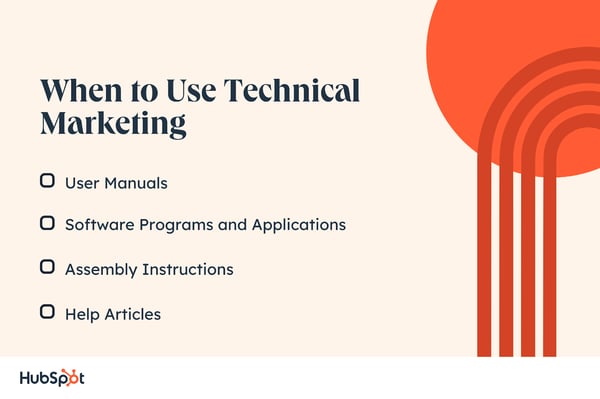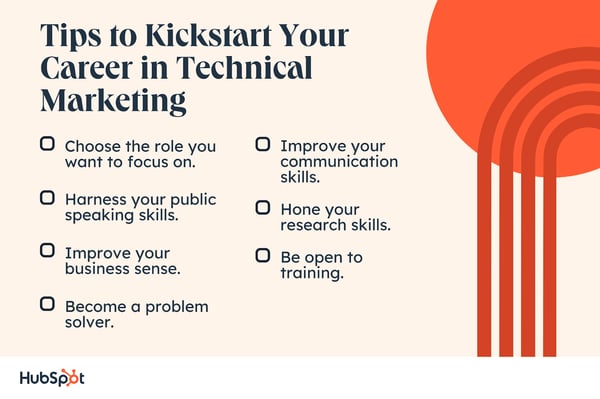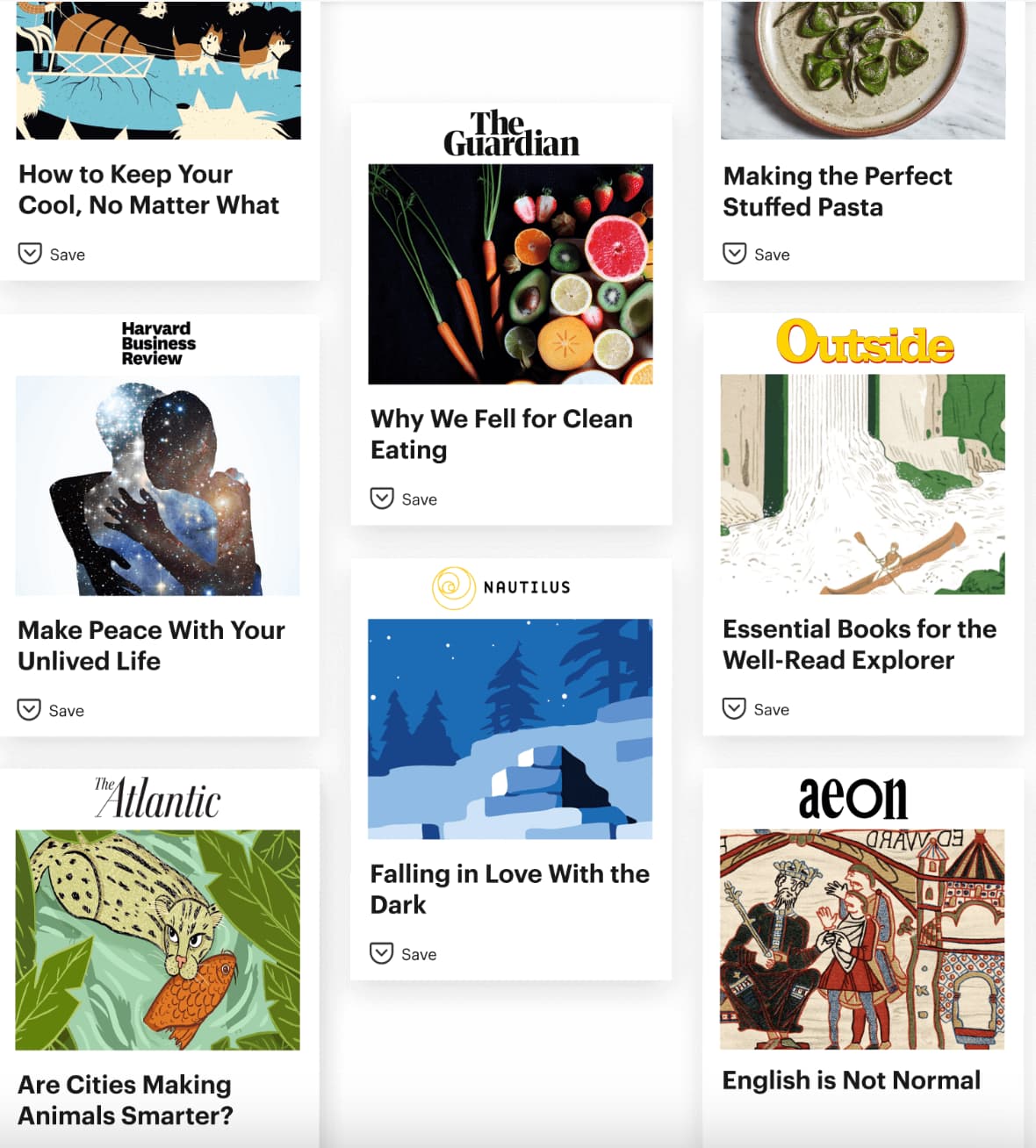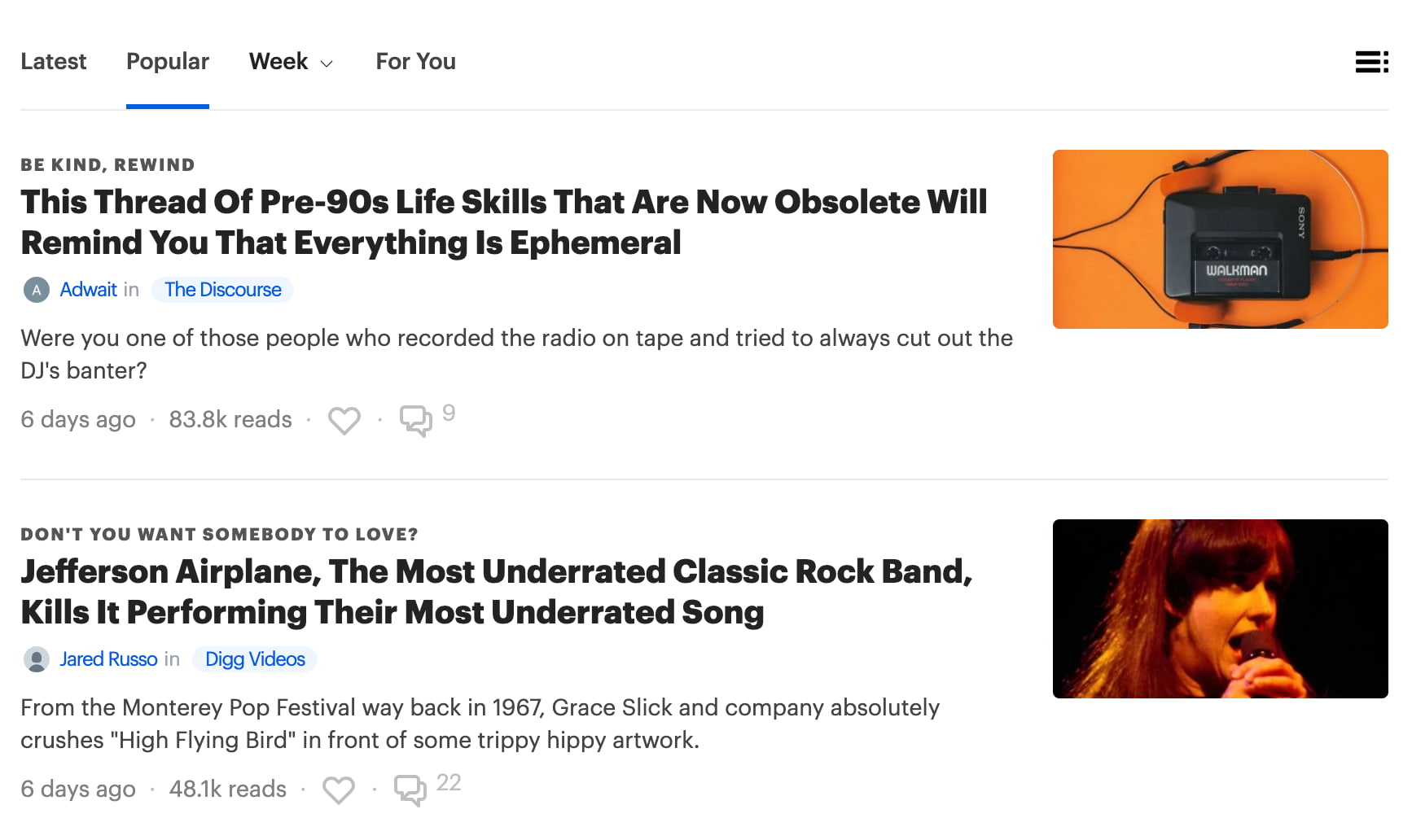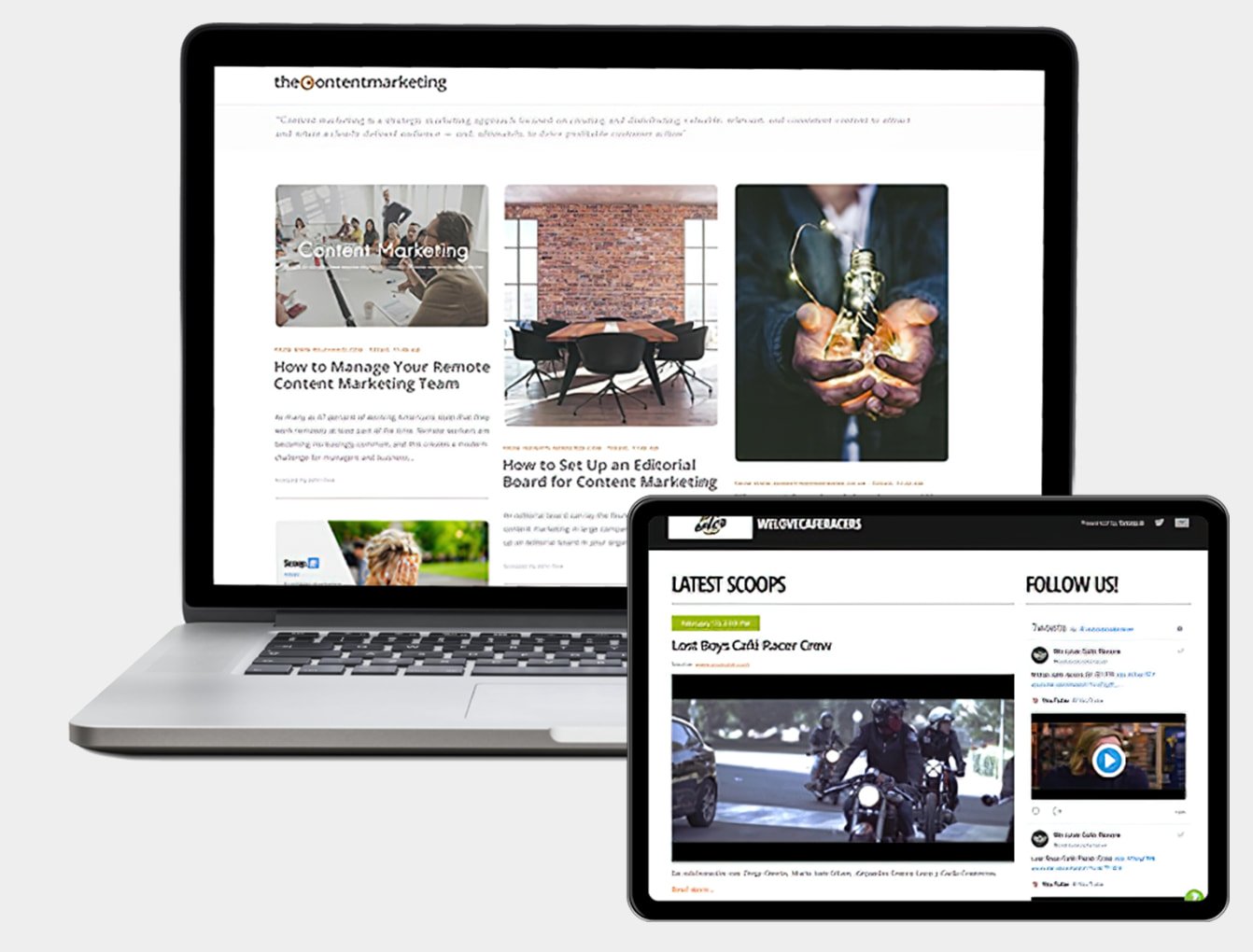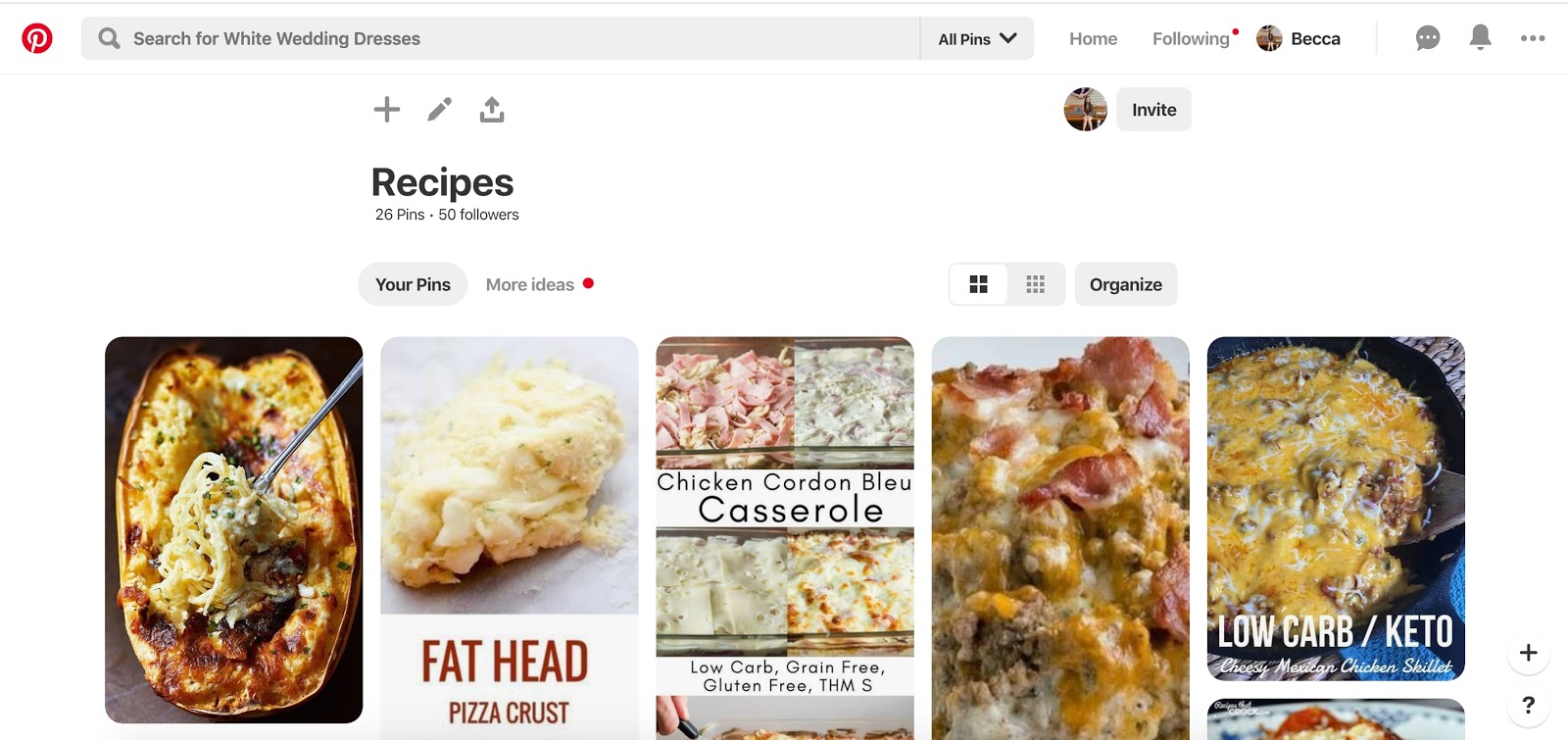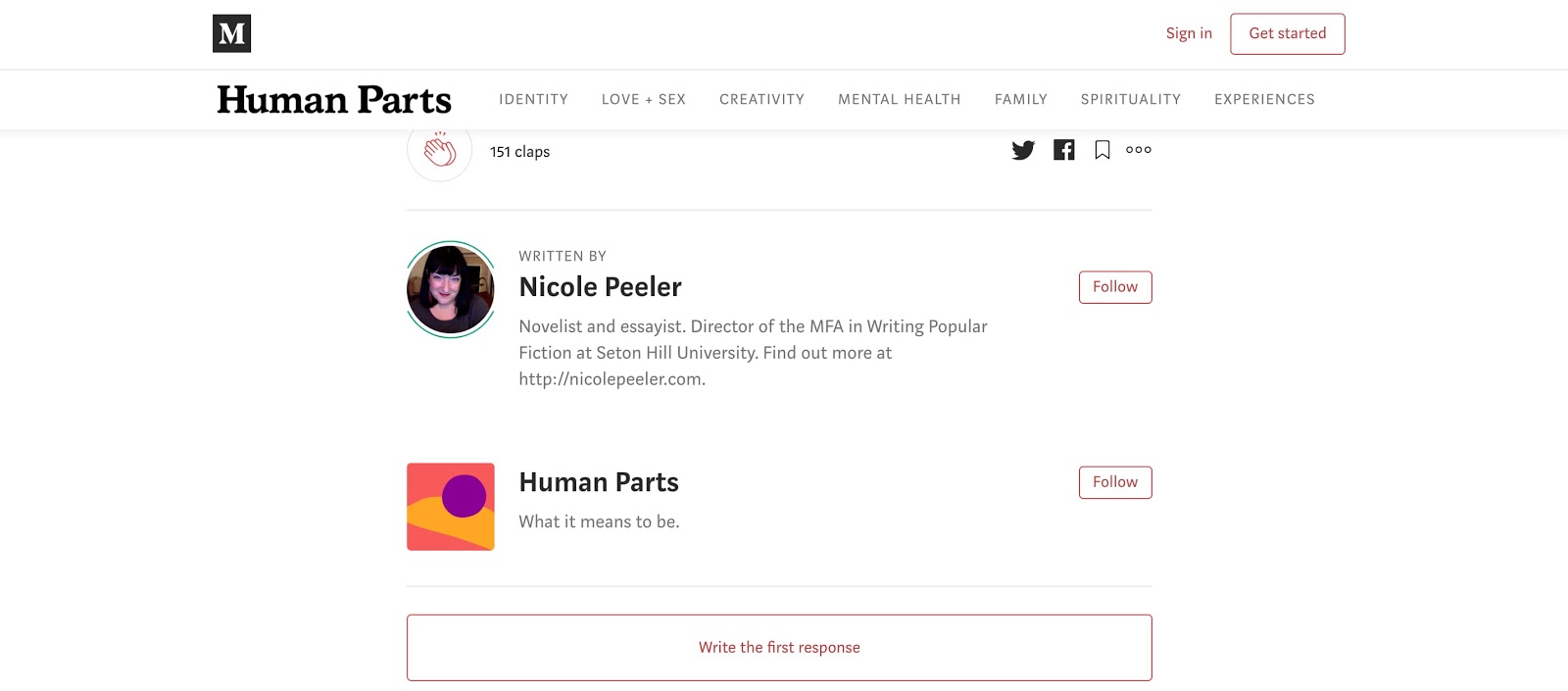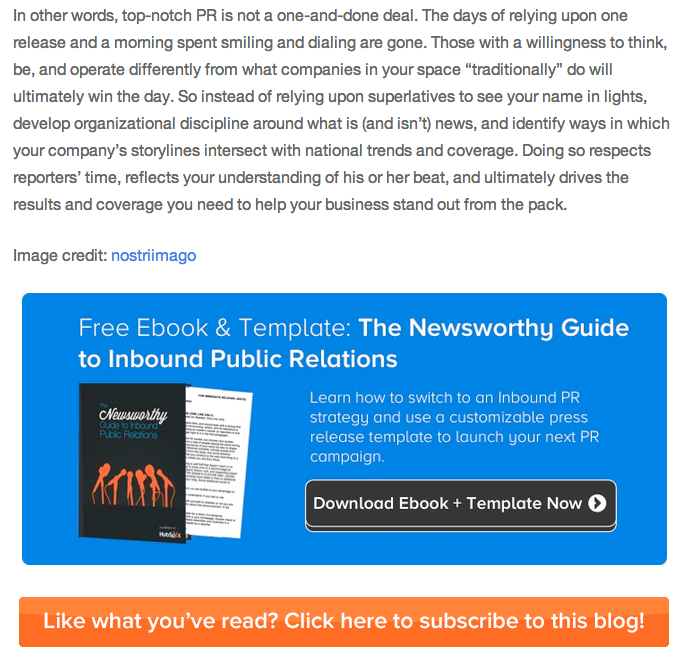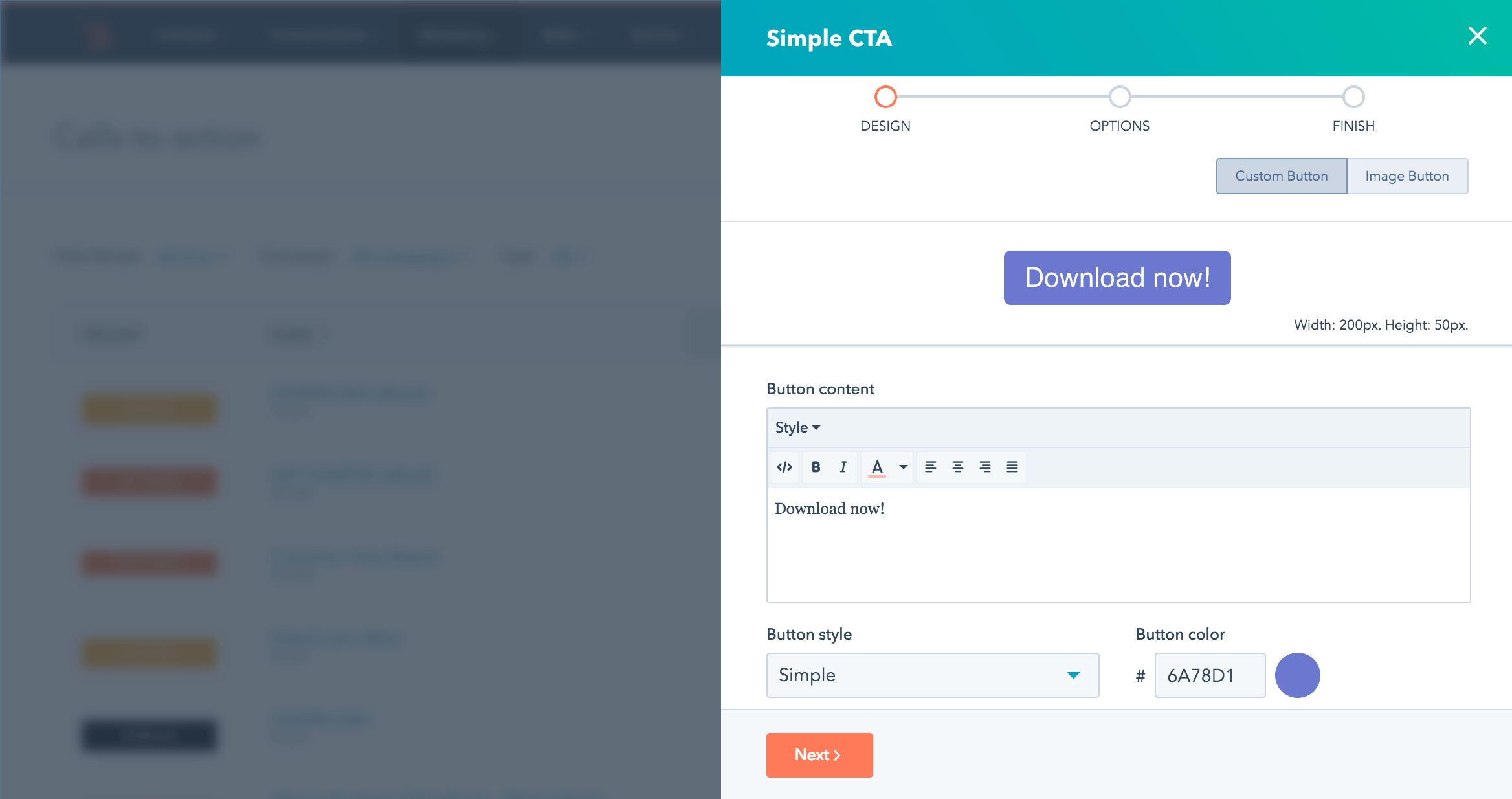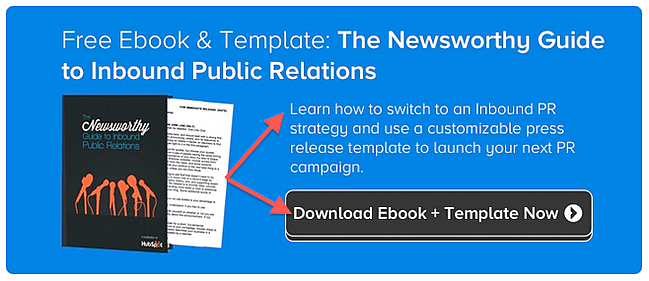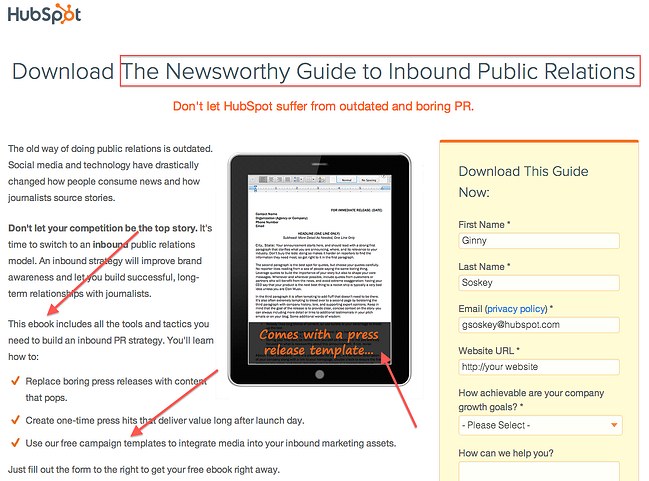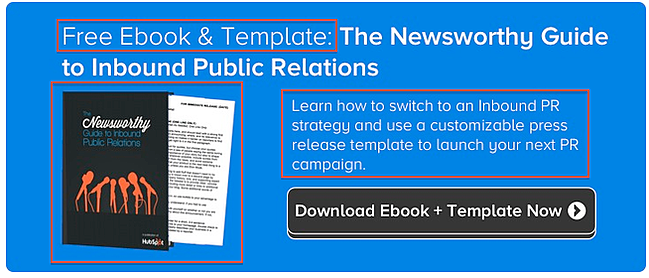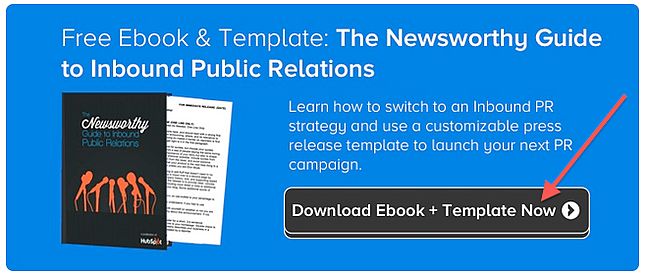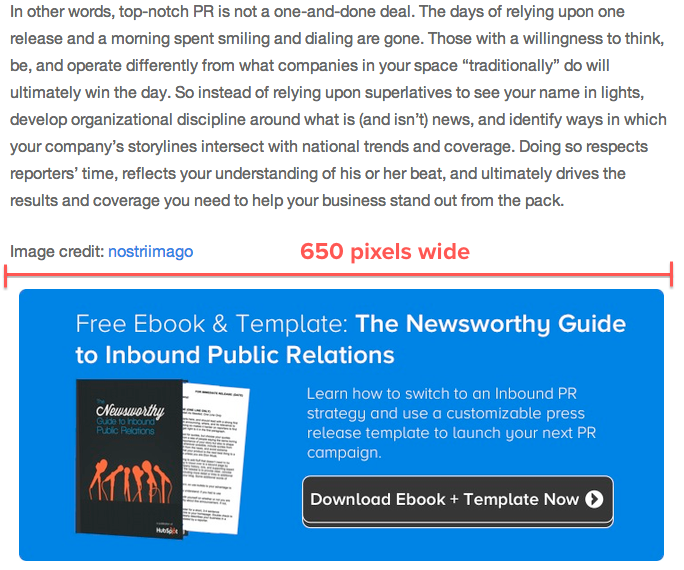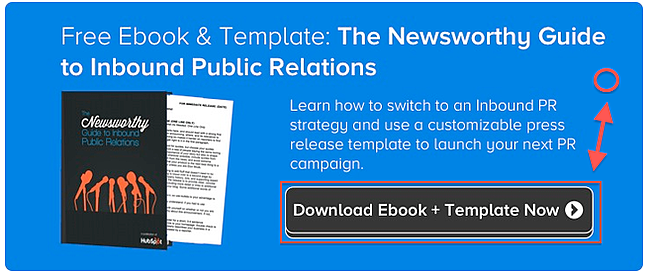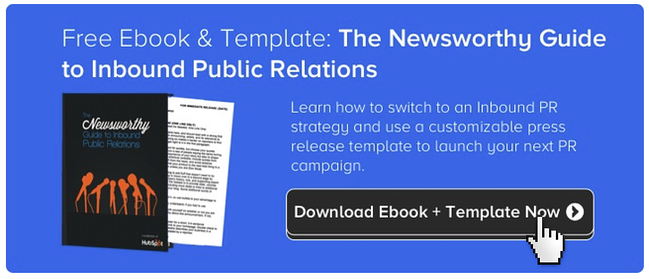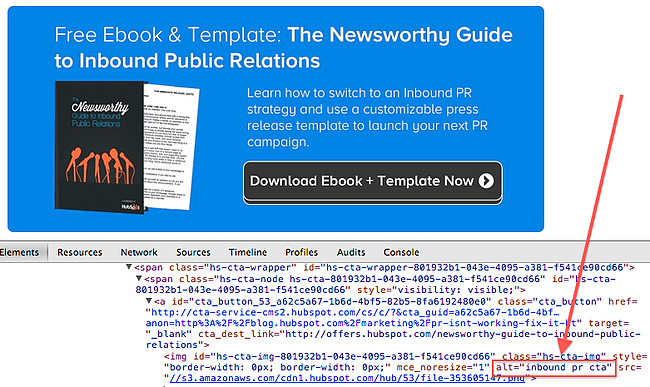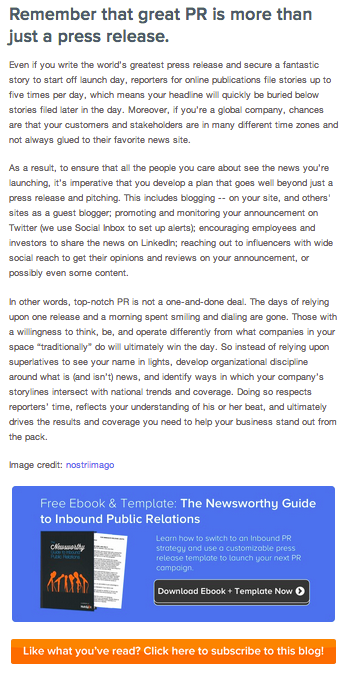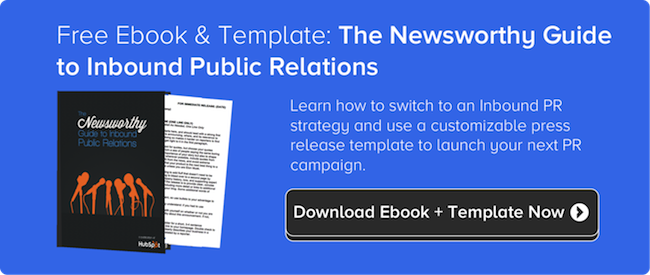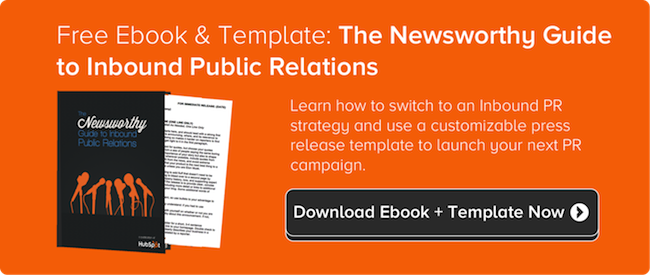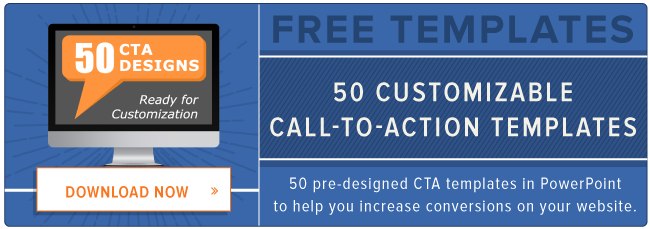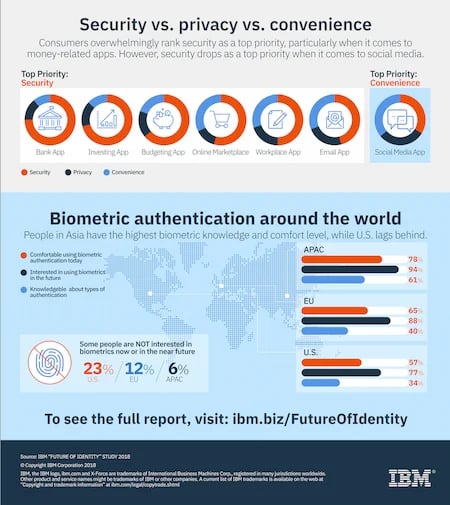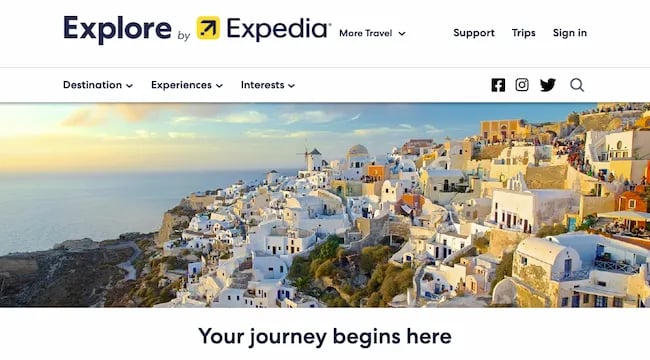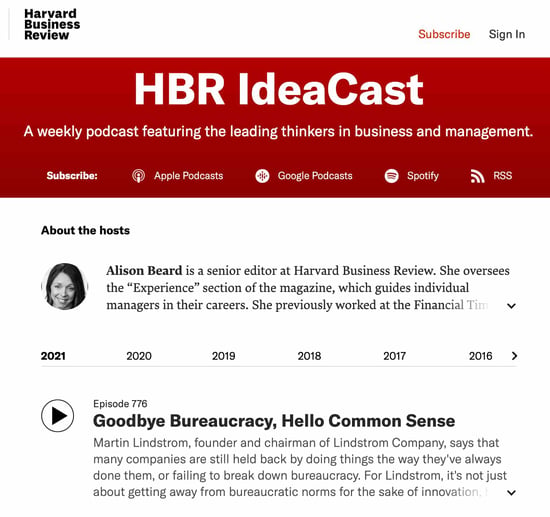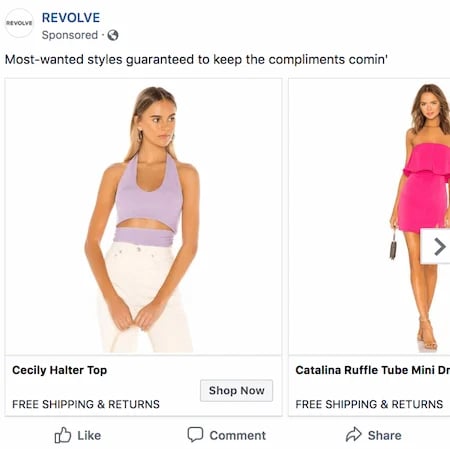Your customers, leads, and audience members want valuable content from your business. And that content needs to reach audience members in a way that feels natural and organic versus being disruptive. Content marketing helps businesses do this, and it describes the process of attracting, engaging with, and delighting your target markets.
By honing in on effective content marketing, you can do just that — and as a result, increase conversions, improve brand awareness, boost revenue, establish yourself as an industry leader, and more.

Whether you’re just starting to devise a strategy or you’re refreshing your existing one, it never hurts to re-assess your process and come up with new ways to create and share the content your audiences want. In this guide, we’ll give you a birds-eye-view of content marketing, types of content marketing, content marketing examples, and how to get a strategy going.
Content Marketing
The definition of content marketing is simple: It’s the process of publishing written and visual material online with the purpose of attracting more leads to your business. These can include blog posts, pages, ebooks, infographics, videos, and more.
However, content marketing isn’t just publishing a thin piece of content and hoping people will find it. It’s about purposefully tailoring your pages, videos, ebooks, and posts to your target audience so that they find you the inbound way rather than the outbound way.
Today, outbound marketing strategies (or anything that interrupts your audience members) aren’t as effective at resonating with and converting audience members as they once were.
Today, your content needs to reach your audience in a way that feels natural (a.k.a. inbound). A common way of doing this is by creating a narrative for your content — or telling a story. In doing so, your content will feel more authentic, engaging, and tailored to your audience.
So, what defines content marketing anyway?
Why is content marketing important?
2022 HubSpot research says that 70% of companies use content marketing.
Content marketing is valuable because it:
- Educates your leads and prospects about the products and services you offer. According to 2023 HubSpot research, 29% of marketers use a blog or website for lead attraction and conversion.
- Boosts conversions.
- Builds relationships between your customers and business that result in increased loyalty, and 30% of marketers are creating content that reflects brand values.
- Shows your audience how your products and services solve their challenges
- Creates a sense of community around your brand.
Now let’s look at the various types of content marketing.
Types of Content Marketing
There are many types of content marketing that you may choose to incorporate into your strategy — here are some of the most common:
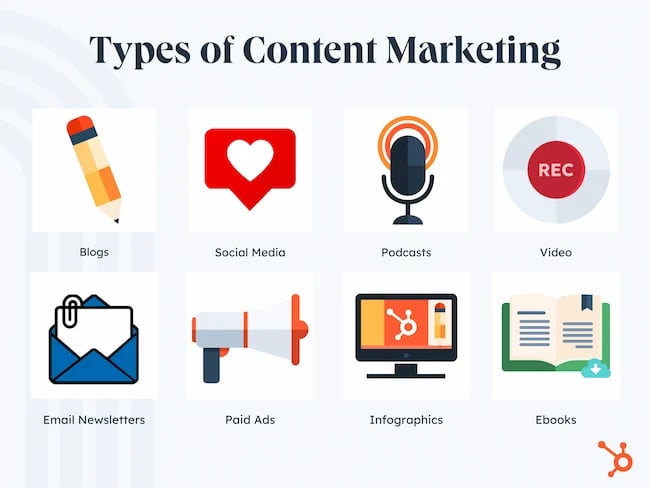
1. Online Content Marketing
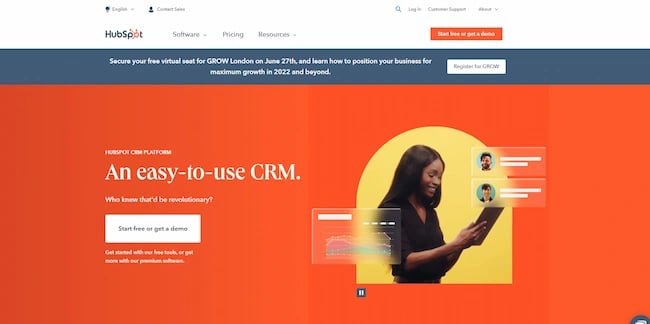
Online content marketing refers to any material you publish online, but more specifically, it refers to your web pages. A strong online content marketing strategy will help you rank higher in the search engine results pages (SERPs) and get you in front of the right people at the right time.
HubSpot’s home page is one example, immediately engaging visitors with specific content about our products.
2. Social Media Content Marketing
With over 4.5 billion global social media users, it’s easy to understand why so many businesses invest in social media marketing. There are many platforms (such as Facebook, Instagram, Pinterest, LinkedIn, Snapchat) to work with, and several ways you can create and share content on each of them (such as photos, live videos, pre-recorded videos, stories).
Featured Resource: Social Media Content Calendar
3. Infographic Content Marketing
Infographics display content, information, and data in an easy-to-understand, graphic format. With a mix of simple wording, short statements, and clear images, infographics are a great way to effectively communicate your content. They work well if you’re trying to simplify an educational or complex topic so all audience members can understand it.
Featured Resource: 15 Free Infographic Templates
4. Blog Content Marketing
Blogs are a powerful type of inbound content and allow for a lot of creativity in terms of their purpose and topic. With a blog, you can do things like promote other internal and external content and blog articles with links, add social share buttons, and incorporate product information.
Featured Resource: Start a Successful Blog
5. Podcast Content Marketing
More than 60 million people listen to podcasts across the Spotify and Apple Podcasts platforms. For this reason, many businesses and media outlets have begun creating and sharing their own podcasts.
Podcasts allow for a lot of creativity as they can be about any topic of choice. Additionally, you decide other factors related to the podcast such as cadence of episodes, who’s on the podcast, where you advertise the podcast, and how long episodes are.
Featured Resource: How to Start a Podcast
6. Video Content Marketing
According to Wyzowl research, 73% of consumers say they prefer to learn about a brand’s product or service through video. Additionally, video marketing can boost conversions, improve ROI, and help you build relationships with audience members. You may choose to share your video content on social media platforms, landing pages, or on a co-marketer’s website.
Featured Resource: The Ultimate Video Marketing Starter Pack
6. Paid Ad Content Marketing
Paid ads can help you reach a broad audience and allow you to position yourself in all the places you want to be seen — paid ads are especially beneficial when paired with inbound marketing. There are many places you can share paid ads including on social media, landing pages, banners, and sponsored content.
Featured Resource: The Ultimate Google Ads PPC Kit
Next, let’s talk about how content marketing works, and look at some content marketing examples.
How does content marketing work?
Content marketers attract an audience with compelling stories and by sharing valuable information. They also use content channels to build community.
So, content marketing for business isn’t just a technique or strategy, but a unique form of communication. With that in mind, people have different needs at different stages in the buying process. To make sure that your content meets a need at every stage, you’ll want to think about your conversion funnel.
Top of the Funnel (TOFU)
At the top of the funnel, you want to build awareness with your content. Your target audience might know they have a problem, but they aren’t sure how to solve it. At this stage, you can focus on brand awareness, broad pain points, and common questions.
TOFU content should pull potential customers in to help them better understand a specific problem. This gives you a relevant opportunity to introduce them to your solution.
Common challenges for TOFU content include competition, balancing educational and promotional content, and tracking ROI.
To address these issues, create a content strategy that grabs the attention of a specific audience. Your strategy will also help you create a plan that aligns content topics and formats with business goals. Then, create a list of KPIs to track your content performance.
Useful content types at the top of the funnel include:
- Blog posts
- Social media posts
- Short-form video
- Podcasts
- Infographics
- Checklists
- Ebooks
- Webinars
- Video Ads
Middle of the Funnel (MOFU)
Once a prospect passes to the middle of the funnel, they’re considering your product. They may have visited your site more than once or they’re engaging with your social media. They might have signed up for your email newsletter.
MOFU content should build a relationship with that person. At this point, they understand their problem and are comparing possible solutions. So, your content should educate them on the specifics of your solution and show how it meets their unique needs.
This is also an important moment to build trust. A prospect might not be ready to buy, so pay attention to changes in user behavior. It can be tempting to make assumptions or go for a quick conversion, but that can damage the relationship. Instead, offer in-depth information and value to nurture your lead.
Great middle-of-funnel content types include:
- Email newsletters
- Product demos
- Landing pages
- White papers
- Case studies
- Longer-form videos
- Blog posts
- Interactive content
- Webinars
You may have heard that social media is just top-of-funnel content. But more users are making purchases on social media, and it’s also a popular channel for customer service and support. So, be sure to create MOFU social posts and let prospects know that you’re ready to help them on this channel.
Bottom of the Funnel (BOFU)
Bottom-of-funnel content helps your prospect make a decision and ideally, convert. This stage focuses on conversion. So, BOFU content should make it easy to test a product, understand pricing, and make a purchase. Content that converts should drive action and create a sense of urgency. Prepare to respond to common objections and other blockers that can impact sales with your content.
Personalization can add to the impact of your content at this stage. Creating powerful CTAs is also important.
Bottom-of-funnel content types include:
- Personalized emails
- User-generated content, like customer testimonials
- Case studies
- Pricing pages
- Competitor comparison blog posts
- Video demos
- White papers
- Remarketing campaigns
Check out this post for more on how to align your content with the buyer journey.
Now, let’s look at some content marketing examples.
Content Marketing Examples
The following examples will give you a better understanding of how you can incorporate content into your greater marketing strategy.
1. Example of Instagram Content Marketing
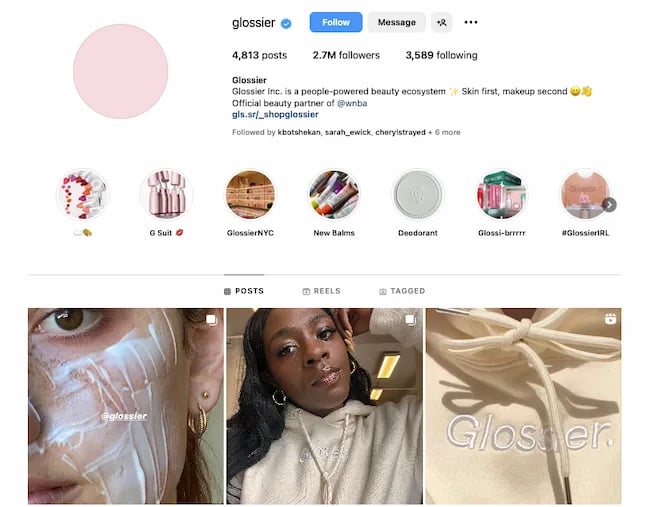
Image Source
Glossier’s Instagram account is on-brand and complements the rest of its marketing content — even if the page didn’t say “Glossier” anywhere on the profile, customers would likely still know the profile belongs to this brand.
The Instagram page shares the Glossier product line, displays different products, and shows how each product can be used. The profile feels and looks uniquely Glossier, and depicts members of their wide customer base.
2. Example of Infographic Content Marketing
Image Source
IBM created an infographic for the future of identity. Their infographic is on-brand, well-organized, and easy to read. It clearly shares data and information about online security and how customers feel about it. It also tells audience members how they can download a more detailed report.
3. Example of Blog Content Marketing
Image Source
Expedia has a blog that shares travel-related information including hotel recommendations, great places to visit, and travel-related activities you can take part in around the globe.
Expedia regularly publishes its blog content to keep readers interested and engaged. It includes a wide range of topics related to any type of trip you could imagine.
The blog is on-brand and all articles relate to the travel technology company’s goal and mission of gaining customers and boosting brand awareness. They do this by linking to their services and writing about customers who have already had positive experiences with the company.
4. Example of Podcast Content Marketing
Image Source
Harvard Business Review (HBR) has a weekly podcast called HBR IdeaCast which features industry leaders in both business and management. You can either subscribe to consistently receive their hundreds of podcasts or pick and choose which ones you want to listen to.
The podcast is on-brand and complements the rest of HBRs published content. It also serves as a great way for HBR to connect with their target audience, enhance brand awareness, and gain a following of audience members through a medium that differs from their typical work (e.g. podcast versus HBR article).
5. Example of Video Content Marketing
Image Source
Much of Dollar Shave Club’s video content has gone viral. Their marketing efforts are on-brand, humorous, and entertaining. By establishing a name for itself via online video content, Dollar Shave Club has experienced impressive growth and brand recognition.
6. Example of Paid Ad Content Marketing
Image Source
Revolve — a clothing and accessories company — uses paid and sponsored ads on social media (like this one on Facebook) to reach their target audience while they browse their news feeds.
The content ads feature some of their products as well as details about their free shipping and return policy to drive target audience members to their site (and, hopefully, convert them into paying customers).
7. Example of Twitter Content Marketing
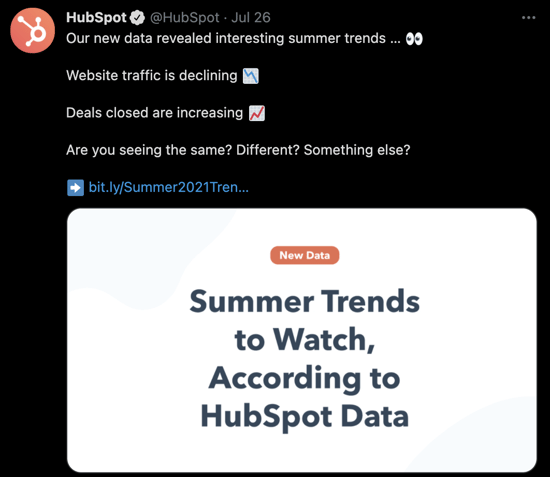
Image Source
HubSpot uses Twitter to market software as well as create a community among customers, target audience members, and industry leaders and experts.
HubSpot shared product information, relevant tips, industry knowledge, and original research on Twitter. HubSpot also interacts with users and makes sure anyone in need of customer support knows exactly where to go for help.
8. Example of TikTok Content Marketing
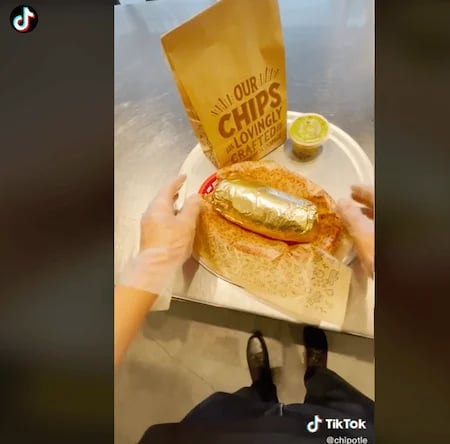
Image Source
Chipotle is an active brand on TikTok — the company uses the platform to reach and engage its customers and target audience members. In addition to reacting to others’ Chipotle-related TikTok content, the brand posts TikToks of their menu items, recipes, people enjoying their food, their restaurants, and more. They have over 2.2 million followers and over 52 million likes.
9. Example of Viral Content Marketing

Image Source
This viral content marketing example was one that came from a TikTok video — Nathan Apodaca’s original TikTok video included him sipping Ocean Spray cranberry juice while skateboarding and listening to “Dreams” by Fleetwood Mac.
As a result of the viral video, TikTok used part of Apodaca’s video in their ads, Ocean Spray used Apodaca in their ads, Ocean Spray saw a bump in sales and brand awareness, Fleetwood Mac’s “Dreams” was number one on iTunes, and there were thousands of videos posted by other TikTok users who bought the cranberry juice and recreated Apodaca’s original video.
Now, let’s cover your content marketing strategy. By implementing a strategy, your content marketing efforts will be impactful and effective in converting leads and reaching your target audience.
Let’s dive into the steps you’ll want to work through in order to develop an effective content strategy.
1. Find your target audience.
Creating content for the broadest possible audience sounds like a good idea. But it’s hard to stand out with content that appeals to everyone.
Instead, focus on a niche of people with specific interests and needs. This can help you build a community with your content. To get started, take a look at your buyer personas.
Then, answer the following questions about your target audience to help you narrow down the right types of content for them:
- What do they need from you?
- What challenges are they looking to overcome?
- Why do they need your product or service?
- How can you help them succeed?
- Where do they spend their time?
2. Set SMART goals.
The next part of your content marketing strategy is to set SMART goals. These should be specific to your business — they’ll likely complement your broader marketing strategy and company goals.
Here are some SMART goal examples and SMART goal templates to help you get started.
3. Determine your KPIs.
Next, set key performance indicators (KPIs) for your SMART goals. KPIs are quantifiable data points you can use to measure your actual performance against your goal.
| smart goal |
related kpi |
| Brand awareness |
Site traffic, social media followers, subscription sign-ups, mentions (by customers and partners) |
| Revenue |
Daily sales, site traffic |
| Conversions |
Conversion rate, shopping cart abandonment rate, associated shipping rate trends, competitive price trends |
| Brand loyalty |
Returning customers, promoters, product reviews, referrals |
| Customer engagement |
Likes, shares, follows, mentions, backlinks |
| Rapport and trust |
Returning customers, promoters, followers, mentions |
| Strategic partners |
New partnerships, mentions, backlinks |
4. Decide on the type of content and content formats.
Next, you want to choose the type of content you’ll create and your top content formats.
Types of content are the broad categories of content you plan to produce. Content formats are the specific presentation methods within a content type. For example, blog posts are a content type, and a blog can include content formats like listicles, how-tos, thought leadership, product reviews, and more.
To get started, run a content audit to see what kind of content is already resonating with your customers.
You may also want to do some competitive analysis and take a look at industry trends. This research can help you figure out what content strategy will work best for your business.
Then, take a look back at the various types of content we reviewed earlier and your target audience research to decide on content types and formats.
5. Choose your content channels.
Once you’ve decided on the type of content you’ll market with, it’s time to choose your specific content channels. Where will you share your content? Where will it live and be shared from?
For some of the content types, the channel you need to work with will be obvious. For example, if you’re creating Facebook content, your channel will be the social platform itself.
6. Set a budget.
Now, set your budget. Think about the type of content you’re creating and which channels you’re marketing that content on.
Then, ask yourself the following questions to figure out your budget:
- Do you need to purchase any software or technology to create the content (such as graphic design software like Adobe Photoshop, a subscription to Canva, a camera to take high-quality photos and videos)?
- Do you need to hire any content marketers or designers (such as artists, writers, editors, designers)?
- Do you need to pay for ad space?
- Do you need access to specific tools or resources to enhance or measure your specific type of content?
Make note of how your responses impact your budget — whether that’s an increase or decrease in what you may have already estimated.
7. Create a content publishing schedule.
To ensure you’re consistently producing content and sharing it with your prospects and customers, use a social media calendar or an editorial content calendar.
This will help your team stay on top of all the content your team is creating as well as allow you to schedule it ahead of time.
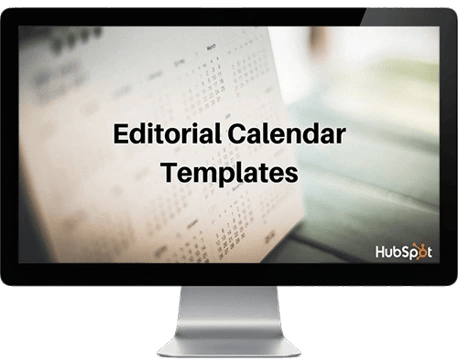
Use a free editorial calendar to schedule and optimize your marketing content and help boost conversions.
6. Create and distribute the content.
Create and distribute your content so your audience members can consume it — and possibly convert.
This step is about more than creating high-quality content. Keep learning to make your content as useful and engaging as you can. Practice writing headlines, make the most of the latest content trends, and build skills in the media that your audience favors.
Next, optimize your content so it’s easy for your audience to find. SEO is a useful skill for searchability. And every social media platform is unique, so check out tips to succeed on channels like Instagram, TikTok, and LinkedIn.
Finally, promote your content on email, social media, and more. Connect with influencers, build co-marketing partnerships, and post ads to get more eyes on your best-converting content.
9. Analyze and measure results.
Lastly, analyze and measure your results so you can make any necessary changes to enhance your content marketing efforts and reach more audience members.
Look at your SMART goals and KPIs to track the success of your content marketing strategy. Did you achieve your goals and KPIs? Were you close to reaching them, or were you off in your estimations?
Here are some tools to help you with your content marketing strategy analytics and results:
Now, how can you ensure your strategy will be effective? Let’s find out.
Traits of Effective Content Marketing
With so many companies creating and publishing content online, it’s essential to go beyond your standard industry fare. A secret? HubSpot strives to meet the following criteria to make sure all our content meets your and other readers’ needs. The result? Millions of visits to our blog posts and web pages per month.
You can achieve similar results for your company if your content:
1. Provides value beyond your product offerings.
Content marketing isn’t just about sharing your products’ virtues to get readers to become a customer. It’s important to offer value that empowers your customers to do something more efficiently, such as making their businesses more profitable or shortening their morning routine.
Whatever the case may be, strive to create content that gives a solution for your customer’s most urgent needs. Your product may be a solution, but if you’re not explicitly writing a product page, you should only incorporate product mentions if they make sense.
In the blog post below, hair care brand Curlsmith helps readers understand how to reach the right balance between high-protein and high-moisture products. It doesn’t mention its products until the very end, instead educating the reader first.
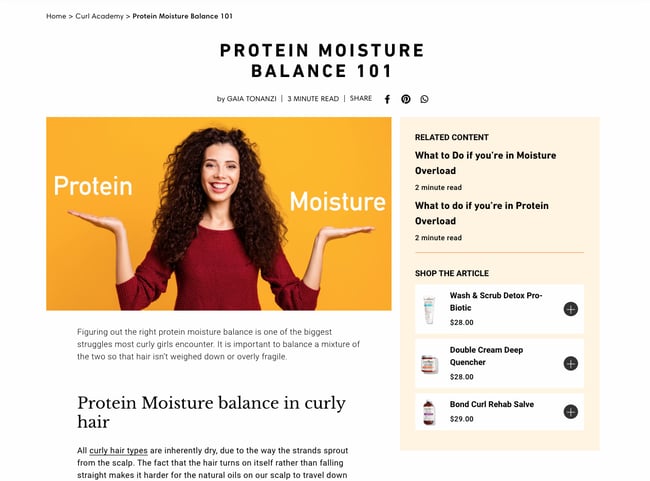
2. Targets readers’ specific buying journey stage.
Providing value and answering customers’ needs is only a part of the story. In each piece of content, you should also target your customers’ specific buyer’s journey stage.
Generally, there are three stages of the buyer’s journey: Awareness, consideration, and decision. In the awareness stage, buyers are still researching their issue. In the consideration stage, they’re researching solutions. In the decision stage, they’re about to pick a provider.
If you’re writing a “What is [X]?” post, then the person who’s reading that article is likely not ready to make a decision about their provider. They are still in the awareness stage, completing research so that they can find out who offers a solution.
Conversely, if you’re writing a product page, then the reader who visits that page has already researched potential products and found you as a possible provider. That means you should pitch your product at every turn, reiterating your value proposition and differentiating yourself from the competition. You shouldn’t be shy about your products’ most valuable features.
3. Demonstrates a consistent brand voice and image.

Image Source
No matter if you’re creating a blog post, web page, or ebook, your visitors should be able to tell who you are immediately upon consuming your content. Your brand shouldn’t sound as if ten different people are writing for you, even if that may be the case.
That’s why it’s critical to create both a writing style guide and a brand style guide. Both of these documents will confirm that:
- Your brand visuals look the same across all platforms and devices.
- Your brand tone and voice sound the same across all written communications.
Once you create both of these, share them with both your content writers and your freelance or in-house designers. Your content marketing publications will be much more cohesive and consistent, which will keep readers coming back to you as a resource and make you look more polished and professional.
4. Is timely and engaging.
Do your customers typically plan their financials at the start of the year? If you’re a finance startup, you might publish a blog post in January about budgeting quarter-over-quarter to prevent clerical errors and avoid overspending.
At the end of the post, you might include a prompt to check out your software, or lead users to a template they can download after providing their email.
This is one example of content marketing that is timely and engaging. If you know your customer’s behavioral and spending patterns throughout the year, it’s critical to capitalize on that. Publish blog posts and offers that capture them at the right time and answer their immediate needs. You’ll be ahead of the companies that publish similar content later on — and oftentimes, being first is all you need to win a customer over.
Now that we’ve seen the top traits of effective content marketing, let’s dive into the best resources you can use to learn more about it.
There are hundreds of thousands of tools available today that qualify as excellent content marketing resources. For the sake of this article, we’re going to keep things simple by providing a handful of our favorite options today.
- HubSpot Academy for free education on how to become an effective content marketer.
- HubSpot’s Free Content Creation Resources for access to resources that will propel your content marketing strategy toward success.
- Content Marketing Institute for access to some of the best content marketing online education, print, and events available today.
- Blog articles on content marketing, trends, strategies, and tips by industry experts (like HubSpot).
- Podcasts about content marketing, such as This Old Marketing, or business trends, such as HBR IdeaCast, to inspire your content marketing strategy.
- Google Trends, which allows you to search for trends across broad topics like content marketing or for niche topics within content marketing.
- Ebooks and case studies about content marketing or content marketing strategies, like this one by Mention.
- Latest content marketing statistics by a reputable database source like Statista.
- Easy to use visual content and design software, such as Canva.
- Free or paid social media management tools, such as HubSpot, Buffer, or Sprout Social, to help you create and share your social content.
- Free or paid content and project management tools, like Trello or Asana, to plan and organize your content marketing strategy.
- Free or paid marketing software to connect your content marketing team, plan, strategy, and results to your greater marketing plan (and even your CRM).
- Free or paid email marketing software, like HubSpot or Mailchimp, to handle all aspects of your email campaigns and content.
- Your network, on platforms like Twitter or LinkedIn, where you can connect with those in your industry to discuss relevant trends, answer each other’s questions, and provide or ask for feedback.
And speaking of tapping into your networks on sites like Twitter and LinkedIn, here’s some inspiration from a few of the greatest content marketers to follow on both platforms today.
3 Marketers to Follow on LinkedIn
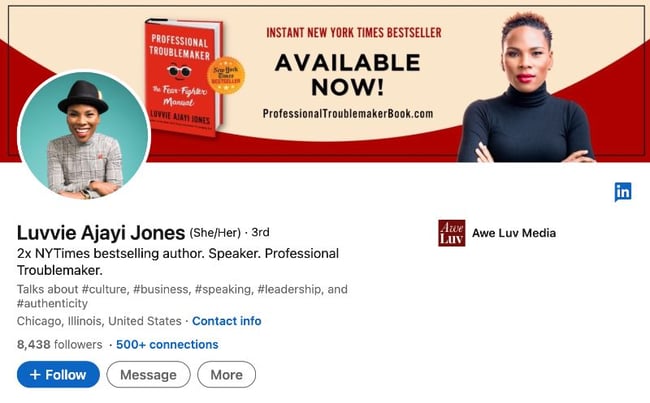
Luvvie Ajayi Jones is a best-selling author, digital strategist, podcast host, and speaker. She’s known for combining humor with her experiences and background in marketing, communications, and new media. Her LinkedIn is sure to inspire you whether you’re thinking about/working on culture, authenticity, leadership, content, marketing strategy, and more.

Zontee Hou is a digital marketer and strategist, speaker, and consultant. She works with scaling companies to help them establish effective marketing strategies that work for their unique goals and audiences. On her LinkedIn profile, Hou shares her expertise in content marketing, social media marketing, marketing analytics, and digital marketing.
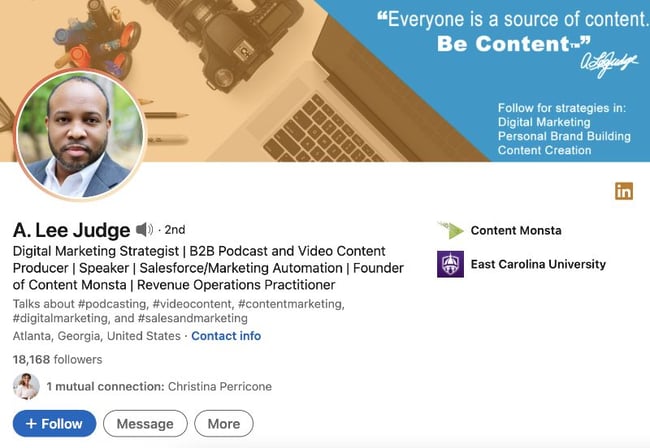
A. Lee Judge is a co-founder and digital marketing strategist at Content Monsta. He’s also a podcast and video producer, speaker, and rev ops practitioner. On his LinkedIn profile, he covers a wide range of topics related to lead generation, social media marketing, how to apply marketing analytics and data, digital experiences, multi-channel marketing, the importance of sales and marketing alignment, and more.
3 Marketers to Follow on Twitter

Ann Handley, Head of Content at MarketingProfs, is a bestselling author and speaker. She offers education and training around marketing that businesses can learn from and apply. She offers in-person and virtual training for companies on content marketing, storytelling, lead generation, and branding – topics she also discusses and shares content about on her Twitter page.
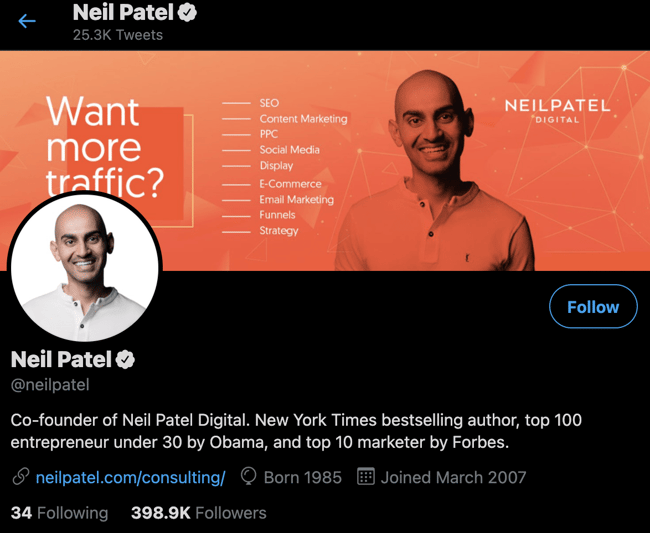
Neil Patel is a bestselling author, marketing expert, speaker, and website and SEO consultant. He’s a thought leader and industry expert in content and digital marketing. His Twitter page includes information about his trainings and services, industry trends, marketing strategy tips and resources, and questions/conversational topics meant to engage followers and other industry experts.
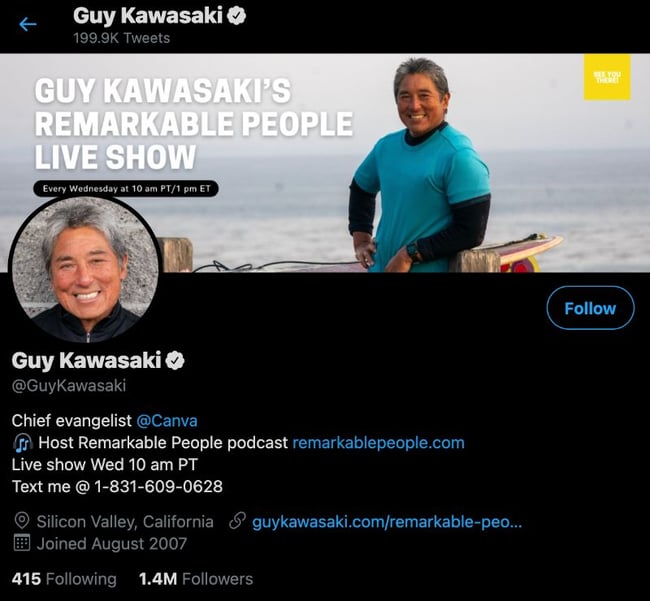
Guy Kawasaki is a marketing strategist, author, entrepreneur, venture capitalist, podcast host, and the chief evangelist of Canva. On his Twitter account, Kawasaki asks followers thought-provoking business questions as well as provides links to, and information about, new podcast episodes, industry trends, marketing strategy tips, and insights based on his experiences.
Engage Your Target Audience With Content Marketing
With effective content marketing, you can reach your target audience and increase conversions. There are several ways to market with content to boost revenue, grow your brand awareness and recognition, and build relationships with your prospects and customers.
And don’t forget to extract more value from every piece of content you create.
To get started, decide which type of content works best for your business and audience and develop a content marketing strategy to begin boosting your bottom line today.
Editor’s note: This post was originally published in August 2019 and has been updated for comprehensiveness.


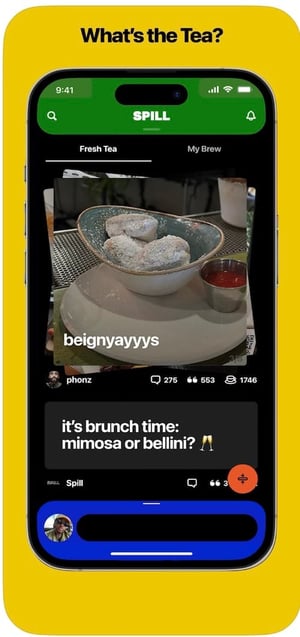 Image Source: Spill
Image Source: Spill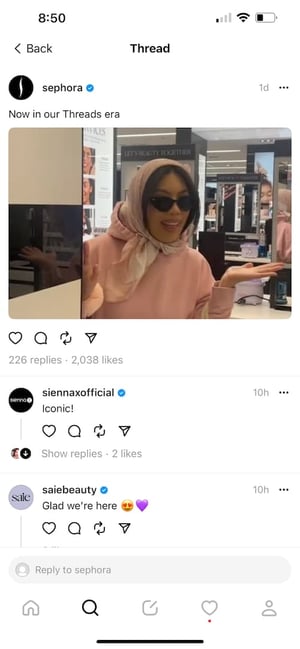 Image Source: Threads
Image Source: Threads![]()

![Download Now: The 2023 State of Social Media Trends [Free Report]](https://i4lead.com/wp-content/uploads/2023/07/3dc1dfd9-2cb4-4498-8c57-19dbb5671820.png)

![→ Download Now: 12 Resume Templates [Free Download]](https://i4lead.com/wp-content/uploads/2023/07/4ec95757-585e-40cf-9189-6b3885074e98.png)


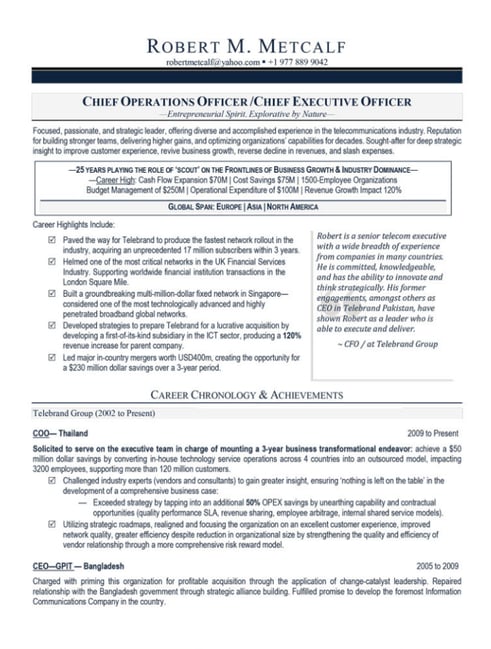
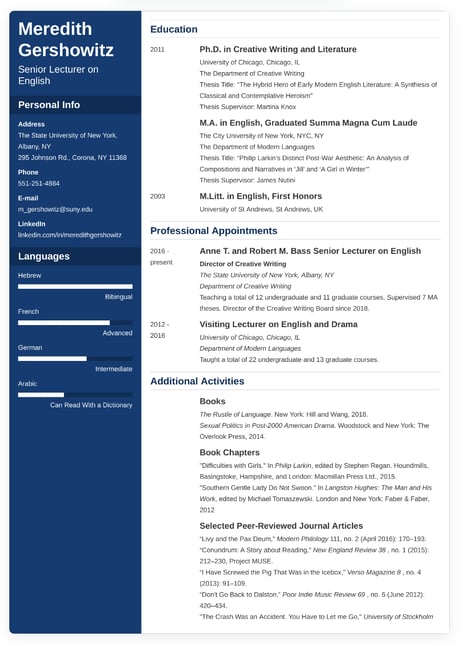
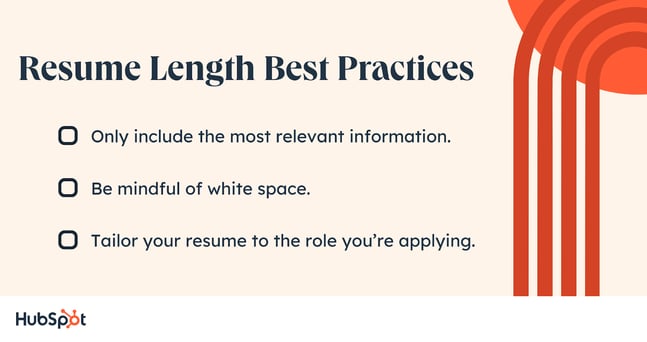
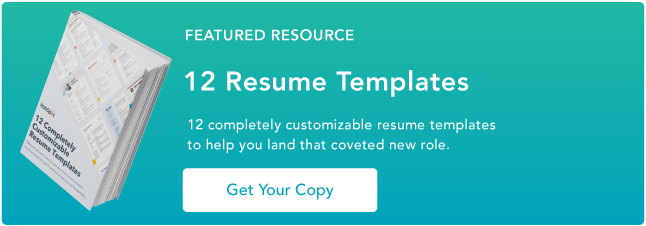
![Download Now: SEO Starter Pack [Free Kit]](https://i4lead.com/wp-content/uploads/2023/07/1d7211ac-7b1b-4405-b940-54b8acedb26e.png)

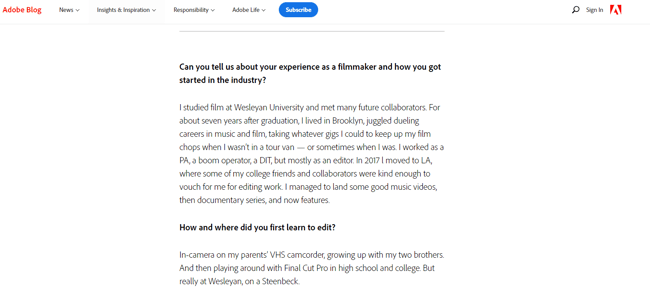
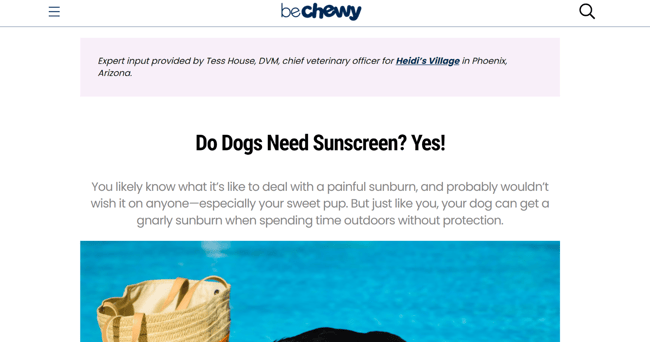
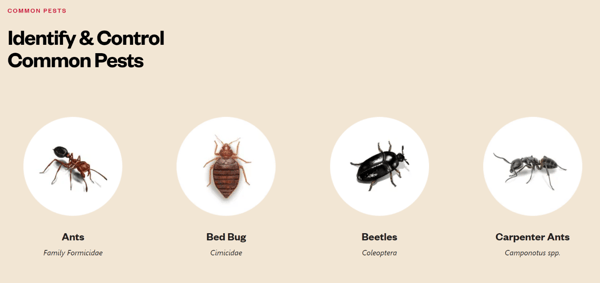

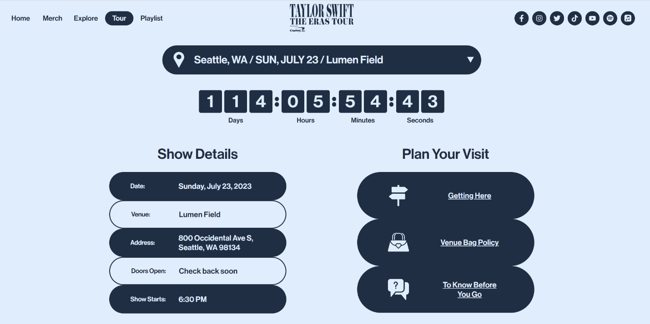
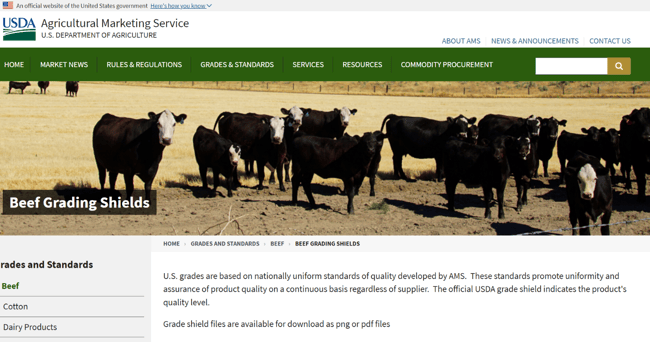
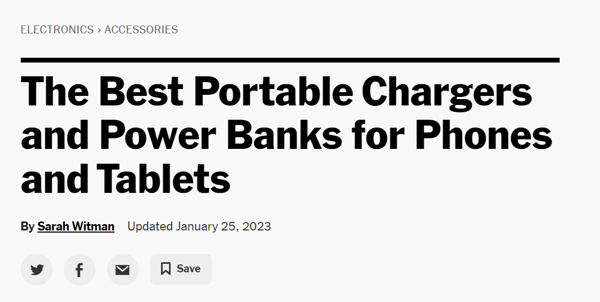

![Download Now: 150+ Content Creation Templates [Free Kit]](https://i4lead.com/wp-content/uploads/2023/07/5478fa12-4cc3-4140-ba96-bc103eeb873e.png)


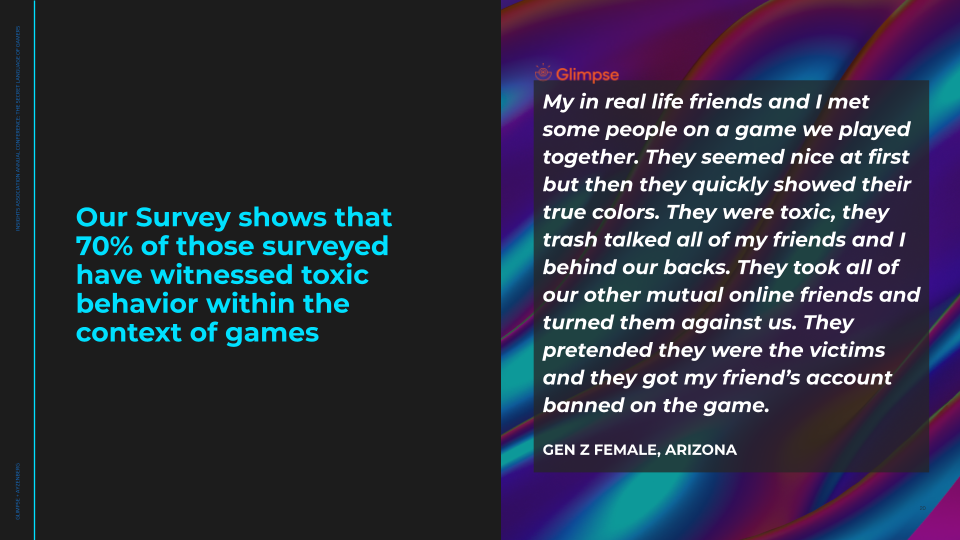
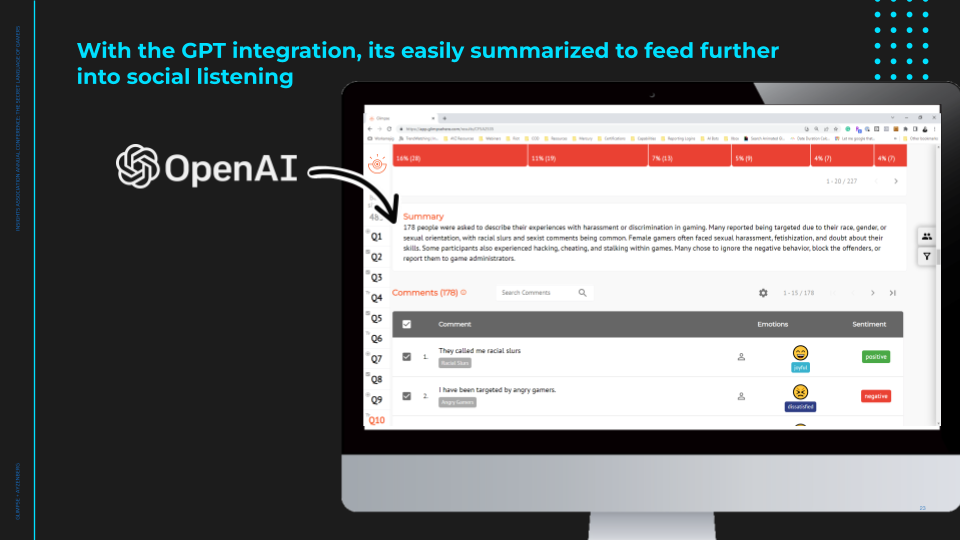
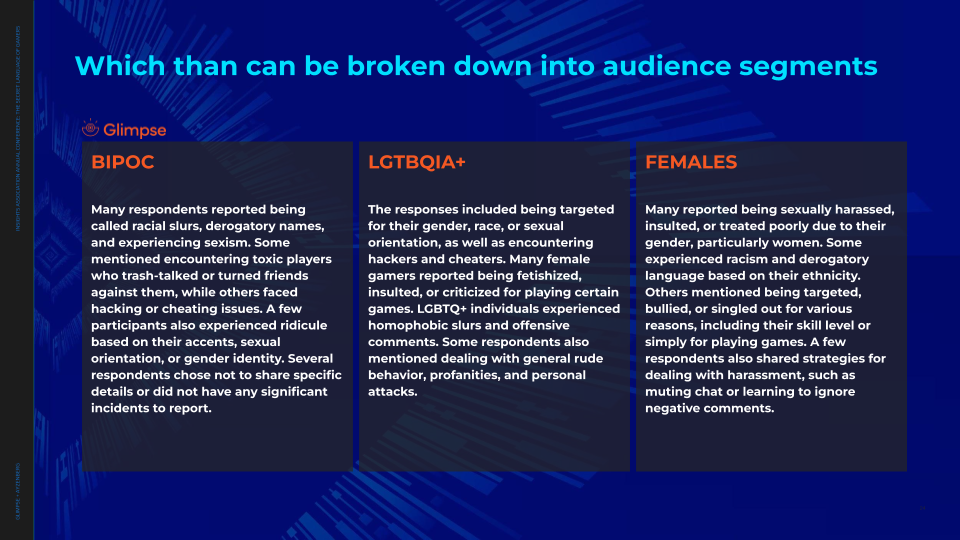
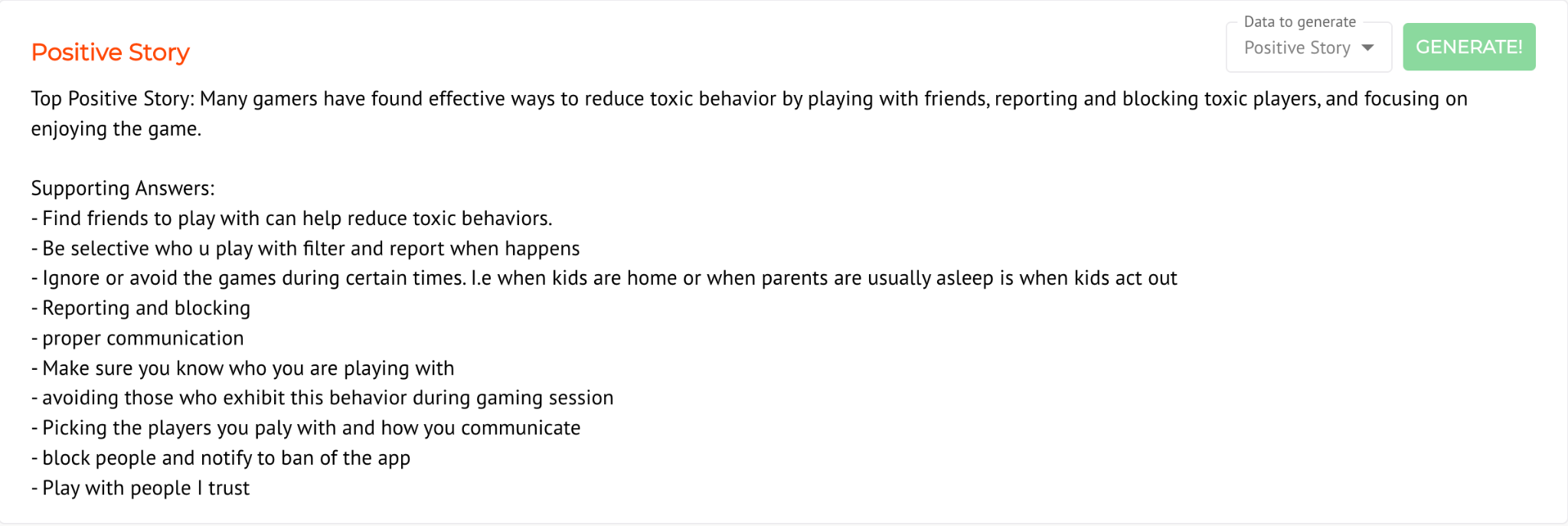


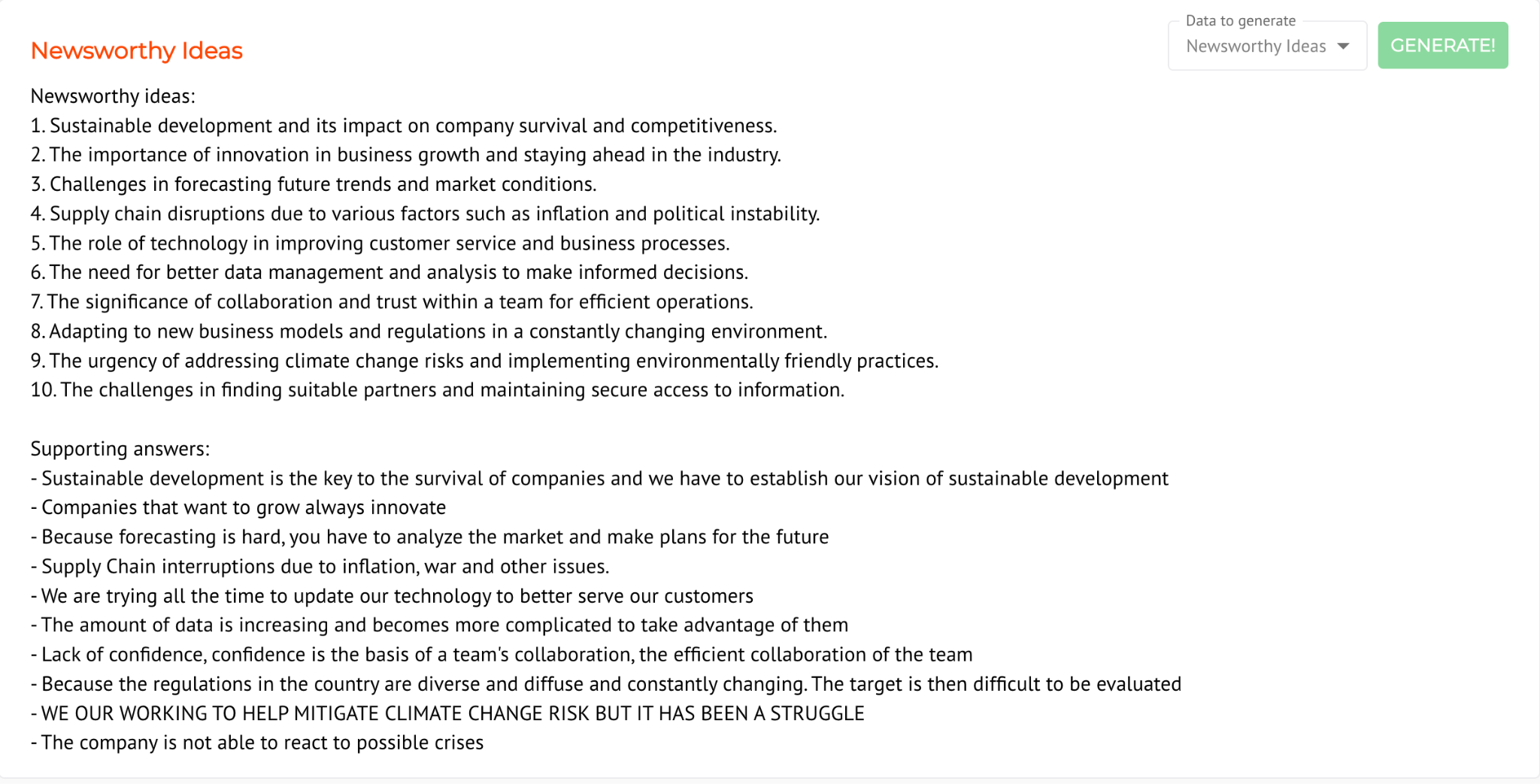
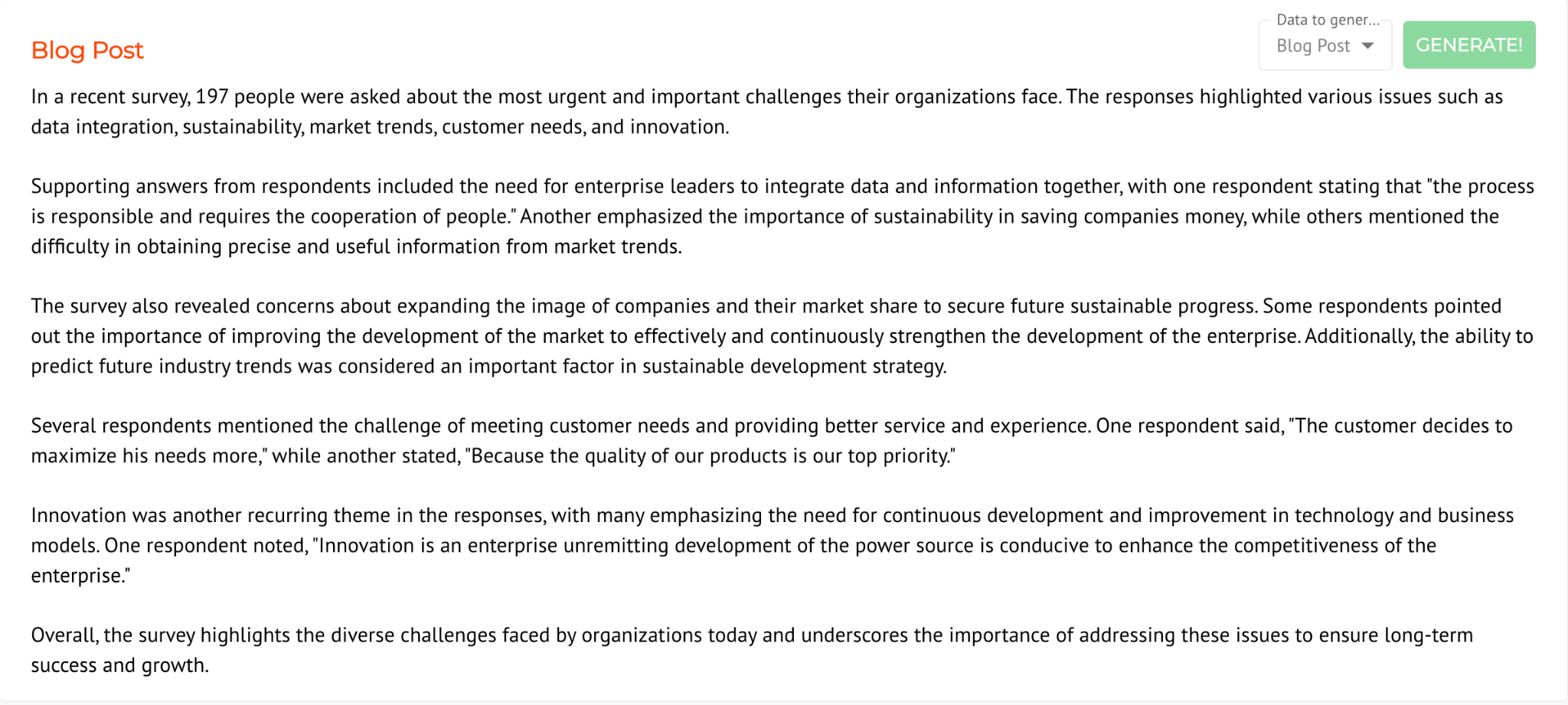
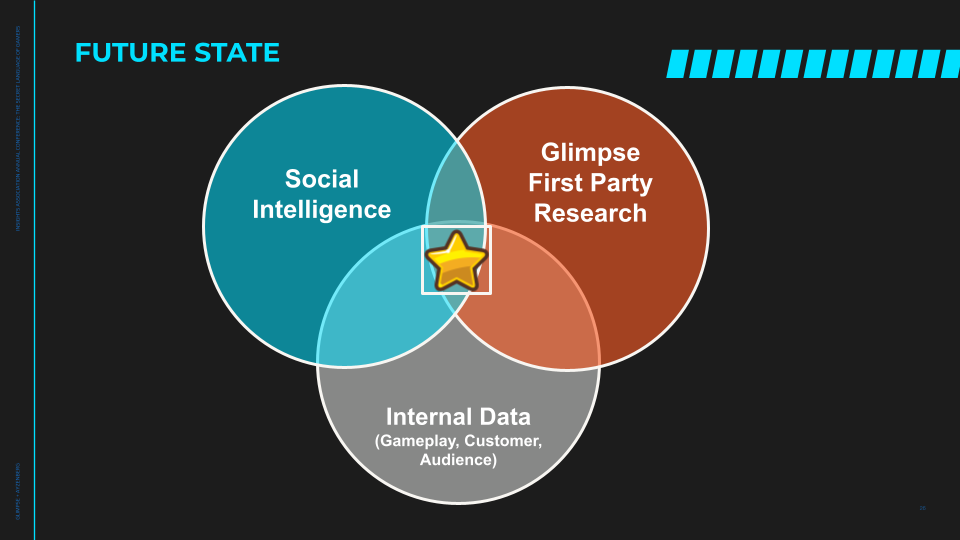

![Download Now: The State of U.S. Consumer Trends [Free Report]](https://i4lead.com/wp-content/uploads/2023/07/ebf9ec8e-a468-455a-943e-80aa4e6be694.png)

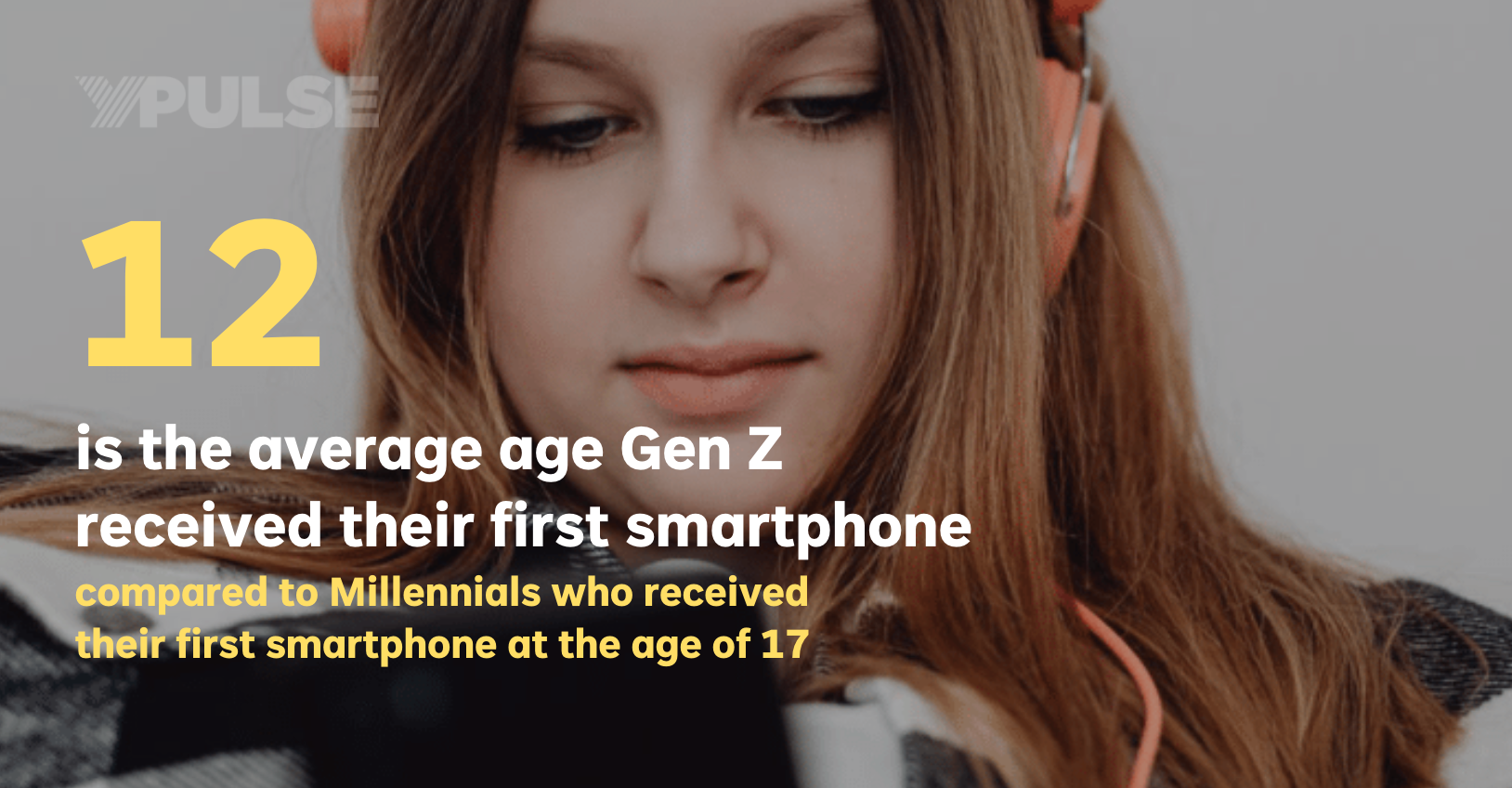



![Download Now: Free Marketing Plan Template [Get Your Copy]](https://i4lead.com/wp-content/uploads/2023/07/aacfe6c7-71e6-4f49-979f-76099062afa0.png)
